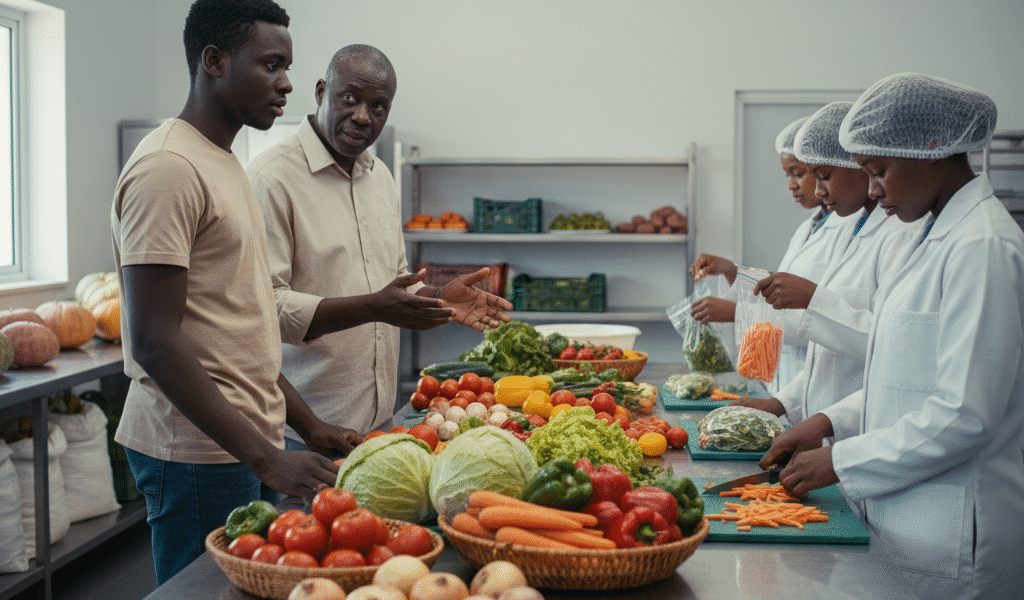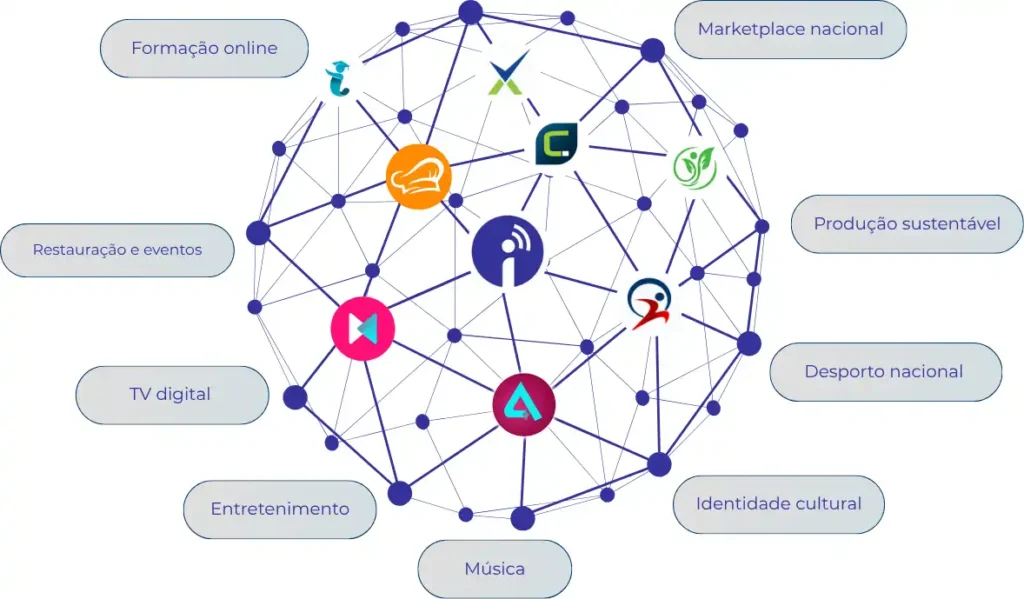
Chapter 28 – Processing Vegetables and Legumes
The next space Mr. Ernesto showed Salimo was a cool area, where young people worked at stainless steel tables. There, baskets were filled with tomatoes, cabbage, carrots, onions, lettuce, and peppers. Other buckets held sweet potatoes, cassava, and pumpkin. The environment was clean, organized, and full of energy.
— "Here we process vegetables," explained the PROSPERAR mentor. "What you see in the market almost always spoils due to lack of preservation. But when we wash, cut, and package ready-made portions, the value multiplies. Families want convenience, restaurants need speed, and supermarkets demand quality."“
Salimo paid close attention. He watched as young people sliced carrots into thin strips, packaged washed cabbage, and prepared packets of ready-made soup with a variety of vegetables. He realized this wasn't a luxury, it was a necessity: saving time, reducing waste, and offering healthy food at an affordable price.
The mentor added: "Any young person can start small: a clean table, a knife, plastic bags, and discipline. If you organize well, you can supply the neighborhood, school cafeterias, or small restaurants. It's turning simple things into income."“
Salimo understood that even common vegetables concealed business opportunities. It wasn't just about selling food, but about offering solutions.
You Can: What seems like just a cabbage today could be the root of a sustainable business tomorrow.








